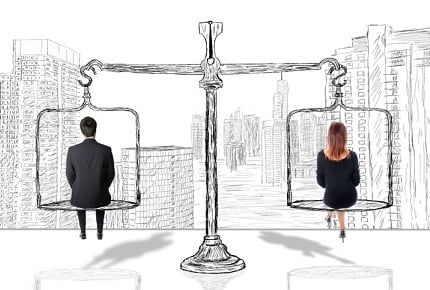The insurance industry workforce may seem to be gender diverse but work still needs to be done to address equality at the highest level of the industry, an expert has said.
With statistics from the Workplace Gender Equality Agency (WGEA) finding female participation in the insurance and wider financial services industry out-ranks that of men nationwide (55% to 45%), unequal pay and limited female participation at the C-suite level means the industry “has some way to go.”
That’s the verdict of Ahranee Vijayaseelan, special counsel at Hall & Wilcox and president of the Association for Women in Insurance NSW, who said that while good work has been done the startling level of women in leadership positions needs to be addressed.
Search and compare insurance product listings against Discrimination from specialty market providers here
“Women only occupy 12% of top management positions within the industry and only 1% of insurance firms have a female CEO,” Vijayaseelan told
Insurance Business. “There is a demonstrated inequality in gender diversity at the top executive levels within the insurance and financial services sector and I think we, as an industry, need to be more proactive in maintaining balance between the genders at leadership level.”
WGEA statistics published last month found that the insurance and wider financial services industry had the biggest pay gap (29.6%) between genders of all industries in Australia. While this figure has dropped 0.6% since May 2016, the gap is still startling.
For insurance businesses, Vijayaseelan said that there are a number of options to help promote and increase diversity and gender equality in the workplace.
“Implementing professional development programs to encourage and foster career opportunities for females within the workplace would be one step towards closing the gender gap in management positions,” Vijayaseelan continued. “Targets and quotas may be part of the solution for some workplaces but not for others. One benefit of targets and quotas is that it may unearth genuine talent and it might assist female candidates to be more confident, putting themselves forward for executive and C-suite type roles.”
Vijayaseelan praised the work of Lloyd’s, which is currently compiling its industry-first 2017 Insurance Industry Diversity Survey, which will help benchmark the current state of diversity and inclusion within the Australian insurance industry.
Vijayaseelan said that the business case for supporting diversity is clear with benefits to the bottom line, staff retention, innovation and performance just some of the ways a diverse workforce can improve workplaces.
“Eventually, if we are able to benefit the bottom line in that way, it will make for a better and stronger workforce generally,” Vijayaseelan concluded.
Related stories:
Zurich practices what it preaches with gender equality
'Women at JLT' inspires women to "charge the wall" to equality


